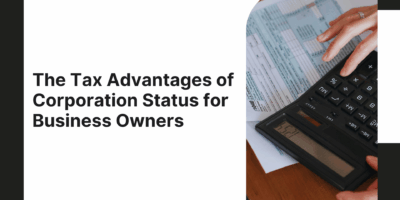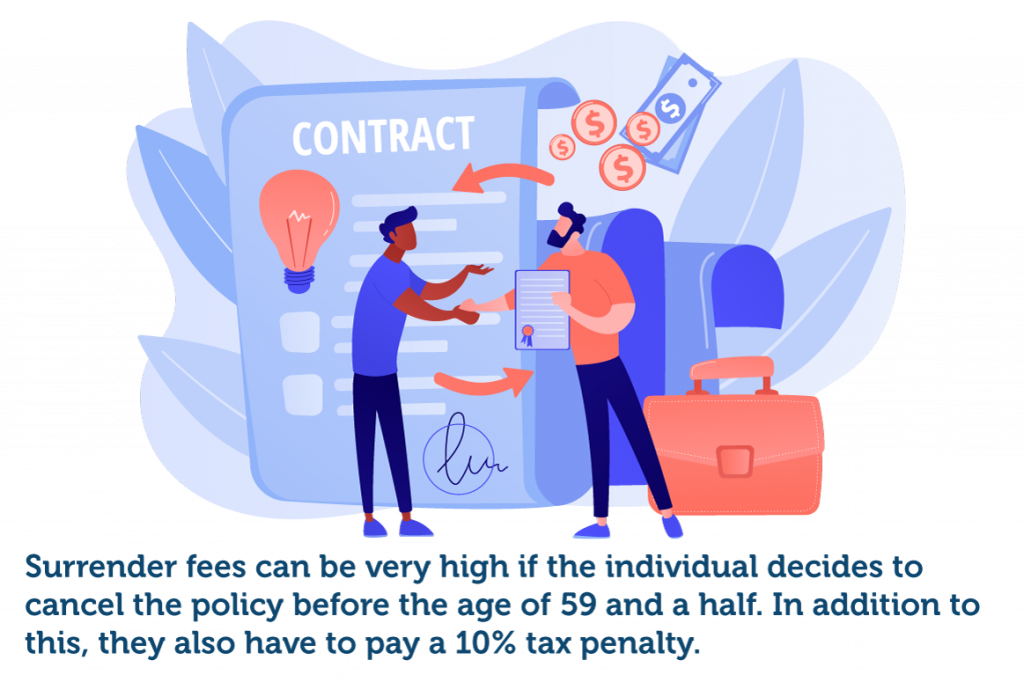
The Tax Advantages of Corporation Status for Business Owners
What if your biggest tax lever isn’t a deduction but your legal structure?

When the burden of retirement planning shifted from employers to employees, many started exploring alternative options to annuitize their savings. That way, they could get their annual income stream without fearing the possibility of running out of money in their retirement days.
In recent years, the demand for a stable substitute to the traditional pension instigated the sales of equity-indexed annuities (EIAs).
As annuities with lower risk and higher gains, EAIs are a popular insurance product. However, they are also quite complex, with features that can be confusing for many.
Hence, they require an in-depth understanding of the benefits and disadvantages before investing in them.
This article goes over the main characteristics of equity-indexed annuities, explaining how they work and their main pros and cons to ease employees’ anxiety about sustaining economic stability into retirement age.

To answer what an equity-indexed annuity is, we must take a step back and define annuities first.
In simple terms, they represent an insurance contract between a person (annuitant) and a financial institution.
The individual buys the annuity through a single payment or multiple compensations called monthly premiums or lump-sum payments. In return, the insurance company is responsible for making periodic payments, starting immediately after the contract (immediate payment annuities) or, more often, at a specified time in the future (deferred income annuities).
Therefore, these payments can be limited to a specific period, or the company can issue them as a stream of payments for the rest of the annuitant’s life. This feature makes them an excellent choice for retirement protection.
Based on their structure, there are two main types:
These are riskier investments because their rate of return depends heavily on the stock, bond, and money markets. The higher risk also makes them potentially more profitable. However, there’s also the probability of losing money in bear markets.
Like variable annuities, these too depend on the stock, bond, or money markets but are more conservative. Thus, they come with much lower risk and a guarantee for a rate of return and a payout. Yet, that also means they have a more modest growth opportunity than variable annuities.

An equity-indexed annuity, or just an “indexed annuity,” is, in a way, a blend of fixed and variable annuities. In fact, it combines their unique advantages:
Simply put, EAIs come with a minimum guaranteed interest rate and are tied to the stock market index, such as the S&P 500.
But what makes these insurance products complex are their methods of calculating the stock market index gains.
There are many ways to do it, making EIAs comparison a real challenge.
Hence, it’s always a good idea to consult a professional on the best options before purchasing one.
When an individual signs an indexed annuity contract, the annuity company invests the lump sum into a market index of the annuitant’s choice.
The person can choose between a single stock market index or spread the premiums between different indexes, for example, the Nasdaq 100, Standard & Poor’s 500, and the Russell 2000.
Once invested, the policy money has an accumulation period where it earns interest.
Equity-indexed annuities usually provide a guaranteed minimum interest rate to protect the policyholder against losses. The rates vary between 1% to 3% on 87.5% of the investment.
However, there’s also an earning limit.
Companies that take decisive, sustainable actions not only contribute to the planet’s well-being but also reap financial benefits in the form of increased revenue and earnings.
Authentic corporate sustainability offers numerous advantages:

In exchange for the security against a potential loss, the insurance company also limits how much a person can earn, despite the (positive) performance on the stock market indexes.
Investors earning interest from the external equities index won’t be eligible for the minimum returns. As a less profitable option, the fixed returns are solely there to ensure that there won’t be any losses to the initial investment.
Some of the more distinguishable features of EIAs are
Before choosing equity-indexed annuities to secure their retirement, annuitants must consider all aspects, including contracts and potential fees.
For example, some EIAs allow the financial institution to change the contract features, including the rate cap, participation rates, or the spread/asset/margin fees, affecting the overall returns.
To avoid this, the individual must read the contract carefully before signing it, or they should consult with a professional like an insurance agent, broker, or a financial planner.
Another thing that people tend to overlook is the charges that could result from an early surrender of the policy. In other words, it’s the penalty the policyholder will have to pay if they cancel their policy. Sometimes, the surrender charges can be as high as 20% of the investment and last for 15 years or more.
Although they are an excellent alternative for people looking for a more stable investment option with a higher earning potential than fixed annuities, there are some potential equity-indexed annuity problems to consider.
The most significant constraints to EIAs are:
Surrender fees can be very high if the individual decides to cancel the policy before the age of 59 and a half. In addition to this, they also must pay a 10% tax penalty.

EIAs are relatively new.
However, they fall under the fixed annuity category. That’s because they have a guaranteed minimum return that usually doesn’t change or decrease during the lifetime of the insurance plan.
There are certain similarities between a fixed and indexed annuity, the main one being that they are both safer options than variable annuities as an investment option for retirement.
However, even this feature has its disparities between the two.
In a Forbes article, Financial Advisor Sara Hornick explains that a fixed annuity would better suit a more conservative investor who doesn’t want to take any risks and is searching for a defined return. Hence, when a person wants to accumulate an additional $8,000 per year, they would deposit $200,000 in a 4% fixed annuity, allowing this money to collect as interest.
As for people who are willing to take a moderate risk to gain more, indexed annuities would be a better choice. But even if they don’t profit from the stock market returns, they can still safeguard their savings thanks to the guaranteed minimum return.
The guaranteed minimum return of EIAs currently stands at 87.5 % of the premium paid at a 1% to 3% annual interest rate.
In the mid-90s, when these annuities were first introduced to the market, the guaranteed minimum return was, on average, 90% of the premium paid at 3% interest.
However, it’s worth noting that the rates won’t apply if the contract the policyholder decides to cancel the contract. When this happens, they could potentially lose money on fees and the obligatory 10% tax penalty instead of gaining interest.
The main reason to invest in an equity-indexed annuity for many people is the interest they can potentially earn. To calculate how much they’ll make from this long-term investment, annuitants should consider several things, including:
An EIA can average the stock market index’s value on a specified date, daily or monthly, influencing the overall earned interest.
The interest calculation depends on the insurance company and its contract with the individual. Some financial institutions offer simple instead of compounding interest, which results in lover returns.
Usually, EIAs bring lower gains than those a person would get by directly investing in the stock, bonds, or money market. Most insurance companies exclude dividend gains and only calculate earnings from the equity index gains from the market price changes.
The indexing methods play a significant role in EIAs returns. Since they are several different types, with individual pros and cons, the policyholder should be familiar with all options before choosing an indexing method.

There are several different methods to calculate the amount of interest one would get from the changes in the stock market indexes for the annuity contract term.
This indexing method calculates the changes in the stock market within a yearly time frame. As such, it allows policyholders the advantage of locking gains each year. However, financial institutions often combine it with other features, like a lower cap rate, to limit the amount of interest one can gain annually.
Unlike the Annual Reset, the High-Water Mark method uses different contract points for calculating the index values. Usually, it’s the policy anniversaries. It means it takes the highest index values and measures them against the levels at the start of the term.
The advantages of this method can be accounted for by companies crediting more interest and protecting against potential declines. However, it also comes with lower cap and participation rates, and annuitants can lose money if they surrender their EIA earlier.
The Point-to-Point indexing method compares the changes in the market index at two points in time, usually at the start of the contract and at the ending date.
Combined with a higher cap, this option can turn very profitable. However, it’s riskier since it calculates interest at one point (the end of the contract term). So, if the index the EIA is tied to goes up throughout the investment term yet declines at the ending point, the policyholder could lose a part of the earlier gains.
One of the most standard retirement plans is the 401(k).
Like other before-tax plans, this employee-sponsored pension offers tax benefits to the saver but also features like profit-sharing, making it a favored choice for employees and employers.
The traditional 401(k) defers tax expenditures on the income of the worker and their overall investment gains.
When used right, it also promises long-term financial stability suitable for people looking to secure their retirement days.
Since its returns and profitability depend heavily on the stocks, bonds, and money market, the 401(k) bares some similarities with an EIA. They both also have strict cash-out policies with high early withdrawal fees.
But, despite the similitudes, these two should not be confused, as they are not the same thing.
The 401(k), like other before-tax savings plans, will reduce the employee’s current taxable income, giving it an extra benefit, an EIA won’t.
Hence, although they both have their good sides, it’s often a good idea to primarily consider investing in 401(k)s.
Once the person reaches the maximum contribution limit on the before-tax retirement plan, they should invest the remaining money into an EIA or another annuity product.
Equity-indexed annuities are long-term investments. As such, anyone considering the option should be cautious and make a well-thought-out decision. That can make all the difference in ensuring a stable and long-lasting retirement.
Browse our curated list of vendors to find the best solution for your needs.
Subscribe to our newsletter for the latest trends, expert tips, and workplace insights!

What if your biggest tax lever isn’t a deduction but your legal structure?

Are your employees financially prepared for the next downturn? Or is poor financial literacy already costing your company more than you realize?

The difference between a successful webinar and one that falls flat can often be attributed to the webinar platform and its implementation. Thus, understanding how to use webinar software effectively becomes essential.

From uncovering new qualified leads and creating meaningful relationships with prospects to driving more sales, learn how intent data is a cutting-edge tool for an effective sales strategy.
Used by most of the top employee benefits consultants in the US, Shortlister is where you can find, research and select HR and benefits vendors for your clients.
Shortlister helps you reach your ideal prospects. Claim your free account to control your message and receive employer, consultant and health plan leads.